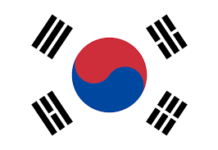Below is how Japan was hit by one of the worst economic bubbles in history.
As it is known, Japan suffered greatly during World War II. The United States decided to use nuclear weapons to end the conflict. To avoid a disastrous situation later, it was necessary to help the country rebuild. This aid materialized through the Marshall Plan, in a payment equivalent to 18 billion current dollars. The objective was to allow Japan to recover, and to prevent it from falling into a state of advanced decrepitude, as it happened to Germany between the two wars.
At the same time, the Japanese, whose patriotic sentiment is no longer in doubt, were called by the government to participate in this same reconstruction. An astonishing savings rate then developed on Japanese soil.
The savings rate exceeded the consumption rate. The collection of Japanese savings by national banks allowed them to considerably facilitate credit and thus more easily finance reconstruction projects.
The Race Forward
This accumulation of fiat currency by the Japanese went hand in hand with a growing expansion of international trade and Japanese exports (electronics and automobiles in particular) facilitated by the undervaluation of the yen.
Between1985 to 1990, the Japanese found it profitable to borrow from local banks, at very low rates, and then exchange their money and invest in dollars. This was called “carry trade”. Basically, people borrowed in yen at advantageous rates and then invested in financial products in dollars that offered a higher return than the interest they owed to theor Japanese bank.
The Plaza Agreements and the Bubble Creation
In 1985 the Plaza agreements were signed. It was a joint intervention by several countries, including Japan, which would give in to pressure from Western countries on an agreement aimed at depreciating the American dollar against the yen.
The consequences of such an agreement were immediate and the yen appreciated 51% against the dollar in a few months, a domino effect that resulted in an extremely substantial drop in Japanese exports.
In Tokyo, accommodation in certain exclusive neighborhoods had close prices, of around 100 million yen per m² (that is, about 712,000 euros per square meter). At the bubble’s peak, Tokyo’s real estate valuation alone was higher than the entire United States. At the time, the phenomenon was so unreasonable that Tokyo was called “the priceless city.”
Faced with an almost uncontrollable situation, the Japanese Central Bank decided in 1989 to change its approach. In just one year, it will more than double interest rates, which will go from 2.5% to 6% in August 1990.
This brutal decision will negatively affect the stock market, which will begin to fall sharply. However, many investors attracted by the promises of easy money had mortgaged their properties to invest in the stock market.
The Japanese Economy Suffers the Shock
Between 1990 and 1997, the Japanese had lost the equivalent of 9 billion dollars. The result was an increasing number of company bankruptcies during 1998 and 1999. Even the sectors in which Japan was a world leader could not absorb the shock related to the bursting of the bubble.
It took Japan more than fifteen years to recover from this great financial crisis and it began to emerge shortly before the bursting of a new bubble, this time in the United States: that of subprime mortgages in 2008. Such crises clearly show that the economy is too serious a concept to be left in the hands of institutions with an often-short-term vision.
By Leonardo Pérez











